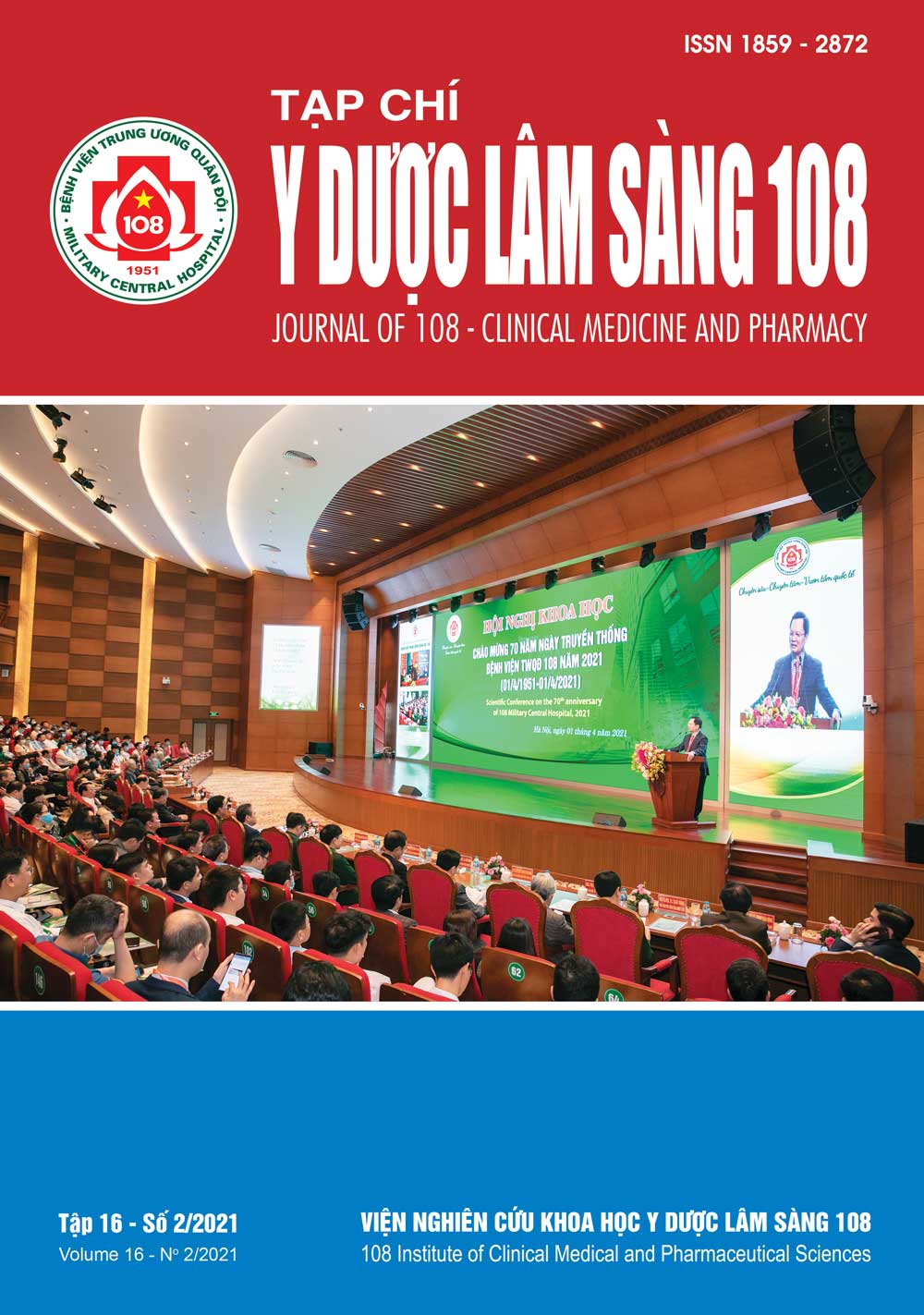Results of surgical treatment for recurrent anal fistula at Viet Duc University Hospital
Main Article Content
Keywords
Abstract
Objective: To learn about the features and treatment outcomes of recurrent anal fistula. Subject and method: The cross-sectional descriptive study was conducted from January 1, 2017 to December 31, 2019 at Viet Duc University Hospital, including patients diagnosed and operated for recurrent anal fistula. Result: There were 41 patients, 36 male (87.8%), 5 female (12.2%); the median age was 42.8 ± 1.7 years. 36 patients (90.24%) were admitted to the hospital for recurrent anal fistula. Average wound healing time was 10.78 weeks, 8 patients relapsed (19.5%); 02 patients (4.9%) who partial incontinence. There were relationships between the surgical results with the number of time of previous operations, with the type of fistula and surgical methods. Conclusion: Recurrent anal fistula has the same characteristics as simple anal fistula. The recurrence rate after surgery is 19.5%, the postoperative feacal incontinence is low (4.9%).
Article Details
References
2. Hong KD, Kang S, Kalaskar S, Wexner SD (2014) Ligation of intersphincteric fistula tract (LIFT) to treat anal fistula: Systematic review and meta-analysis. Tech Coloproctol 18(8): 685-691.
3. Perez F, Arroyo A, Serrano P et al (2006) Randomized clinical and manometric study of advancement flap versus fistulotomy with sphincter reconstruction in the management of complex fistula-in- ano. Am J Surg 192: 34-40.
4. Hàn Văn Bạ (2005) Nghiên cứu nguyên nhân, đặc điểm lâm sàng, cận lâm sàng và kết quả điều trị ngoại khoa rò hậu môn tái phát. Học viện Quân y.
5. Nguyễn Văn Xuyên (2007) Tìm hiểu một số nguyên nhân, đặc điểm lâm sàng và kết quả điều trị ngoại khoa 126 bệnh nhân rò hậu môn tái phát. Tạp chí Y học thực hành, 11, tr. 104-107.
6. Mei Z WQ, Zhang Y et al (2019) Risk Factors for Recurrence after anal fistula surgery: A meta-analysis. Int J Surg (69): 153-169.
7. Li J, Yang W, Huang Z et al (2016) Clinical characteristics and risk factors for recurrence of anal fistula patients. Zhonghua Wei Chang Wai Ke Za Zhi 19(12): 1370-1374.
8. Amin SN, Tierney GM, et al (2003) V-Y advancement flap for treatment of fistula-in-ano. Dis Colon Rectum 46(4): 540-543.
9. Rhyou, Jai Hyun, Shim, Kang Sup, Kim, Kwang Ho (1999) Modified Hanley's Operation in the Treatment. Journal of the Korean Society of Coloproctology 15(1): 55-63.
10. Sygut A, Zajdel R, Kedzia-Budziewska R (2007) Late results of treatment of anal fistulas. Colorectal Disease 9(2): 151-158.
 ISSN: 1859 - 2872
ISSN: 1859 - 2872
